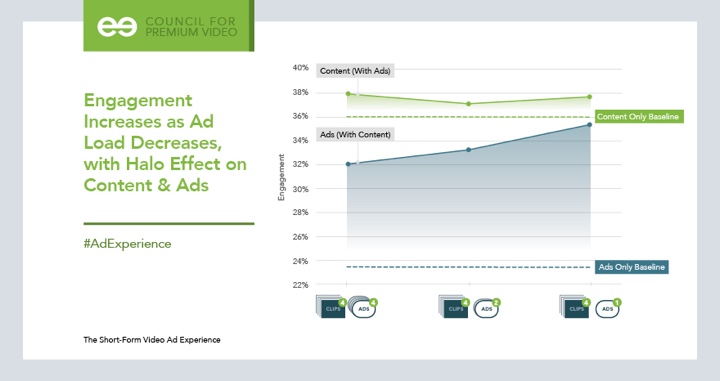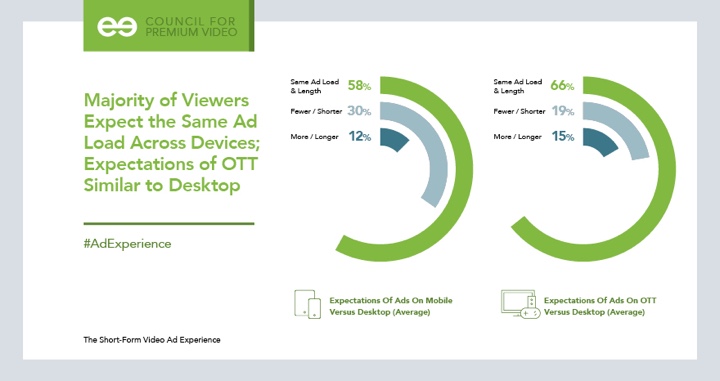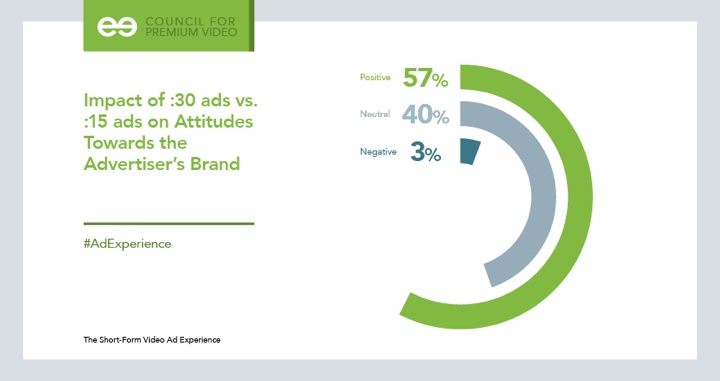-
The Short Form Ad Experience
Thursday, August 17, 2017, 11:02 AM ETPosted by:According to the FreeWheel Video Monetization Report: Q1 2017, 16% of all ad views took place on short-form video clips. However, in Q1 2017, 58% of all video starts were clips (less than 5 mins) and while less time is spent and fewer ads are served compared to long-form and live content, the monetization strategy and user experience of short-form content, given its sheer volume, is of great importance to premium video providers.
The FreeWheel Council for Premium Video set out to study the impact on the viewer across different ad experiences when watching short-form video. Partnering with RealEyes, a leading emotion measurement platform, we exposed 2964 adults aged 18-49 to a set of nine different scenarios of premium video content and ads, to measure the different levels of engagement and emotional reactions through facial recognition technology, as well as surveying them on their overall experience.
The results of this unique study were really interesting:Fewer Ads & Premium Content = Increased Engagement
First of all, as ad load was reduced, engagement levels with the advertising increased. This is perhaps not surprising, but the combination of advertising and content resulted in higher levels of engagement across all content and ad scenarios.
For the lowest ad load, engagement levels with the ads were almost the same as the content, which suggests that premium content creates a halo effect on ad engagement, especially when the viewing experience is not disruptive.
High Expectations
Second, when surveyed, study participants said they would have expected three ads to be served against four clips (content was provided by NBCUniversal and ranged in length from 1-3 minutes). Tolerance levels for advertising in premium, compelling content would appear to be relatively high, which gives the publisher more flexibility in terms of optimizing the appropriate ad load for a particular user session.
Third, those tolerance levels vary somewhat by screen size, and a higher percentage of viewers would have expected lower ad loads on a mobile screen, but most would have expected the same as the desktop experience if they were viewing via an over-the-top (OTT) device.
Viewers Divided on Ad Types, Consistent on Ad Length Impact
When offered the choice, there was an even split between viewers who would elect to see a single, longer ad at the start of their session for an ad-free experience for the remainder of the content, and those who were happy to watch the content with ads interspersed. This underscores the importance of putting viewer preferences front and center when developing user experiences and monetization strategies.
Finally, in a short-form video environment, it seems that longer ads (:30) do not have a negative impact on brand attitudes when compared to shorter ads (:15). Only 3% of those surveyed said that a longer ad had a negative impact on their attitude towards the brand, with 97% saying it impacted neutrally or positively.
So what are the takeaways from this study?
For video publishers, finding the right balance of content and ads is a vital part of the overall viewing experience, and it has implications for engagement levels both within their platform, and with the advertising that supports the content.
Content and ad engagement levels can be close to parity when ad load is low on premium content, with engagement staying relatively steady as the viewer transitions between the two.
What’s interesting is not only the fact that high quality content can have an impact on ad engagement but that better than average ads can have a positive impact on content engagement. This is not to say that ad-free full episode content is any less engaging but in the case of short form premium content, there is a small but decent lift when you have ads.
While lower ad loads do drive engagement, viewers have been conditioned to expect a relatively high ad load and a consistent experience across screens. However, it is key that ad lengths and frequency are proportionate to the length and amount of content
For advertisers, alignment with premium content and publishers who continue to refine the ad experience makes sense: engagement levels tend to be high with compelling, sought-after content (no matter its length) and programmers and platforms who are creating more user-focused experiences will drive better business outcomes.Categories: Advertising
Topics: FreeWheel


